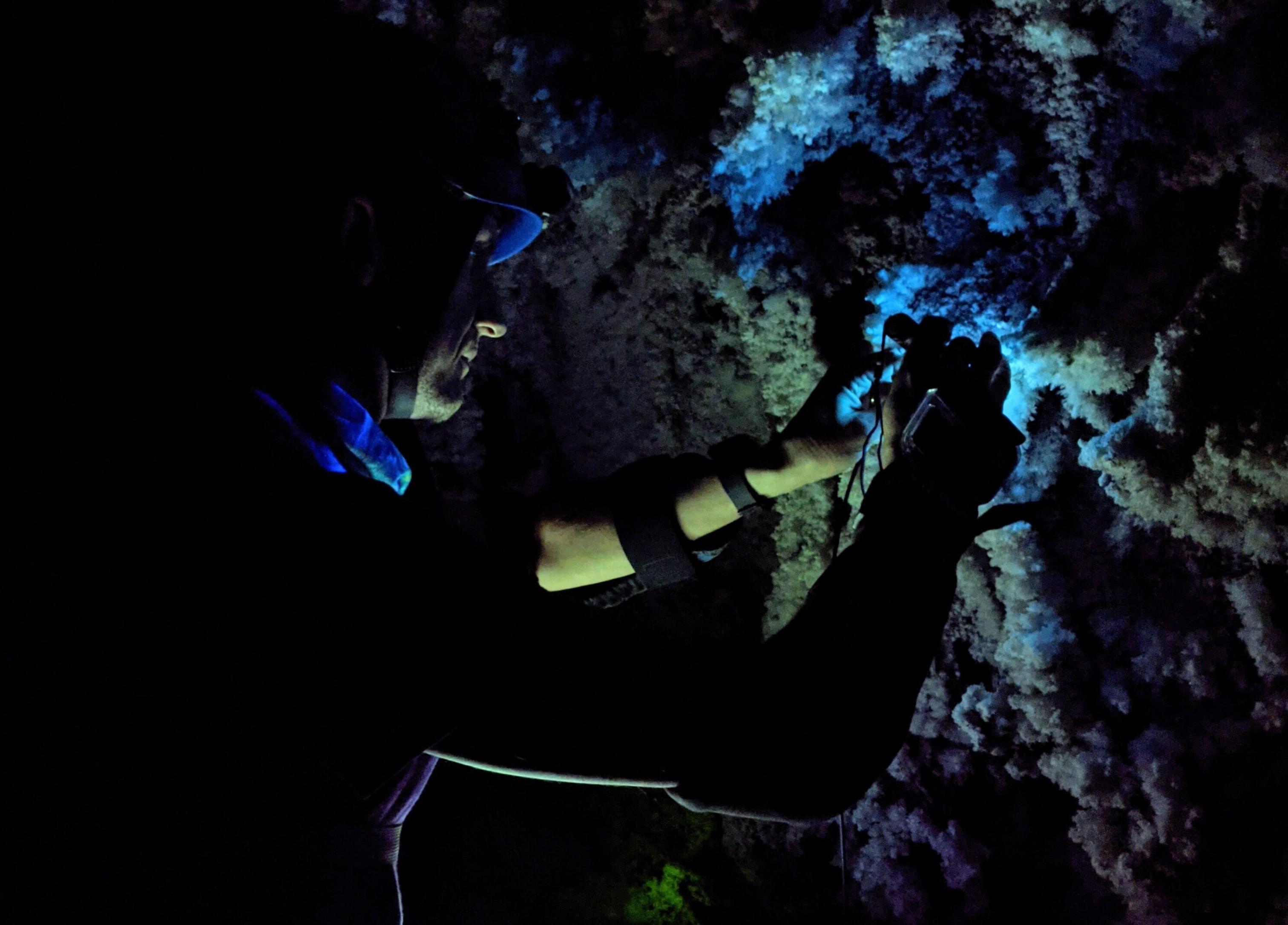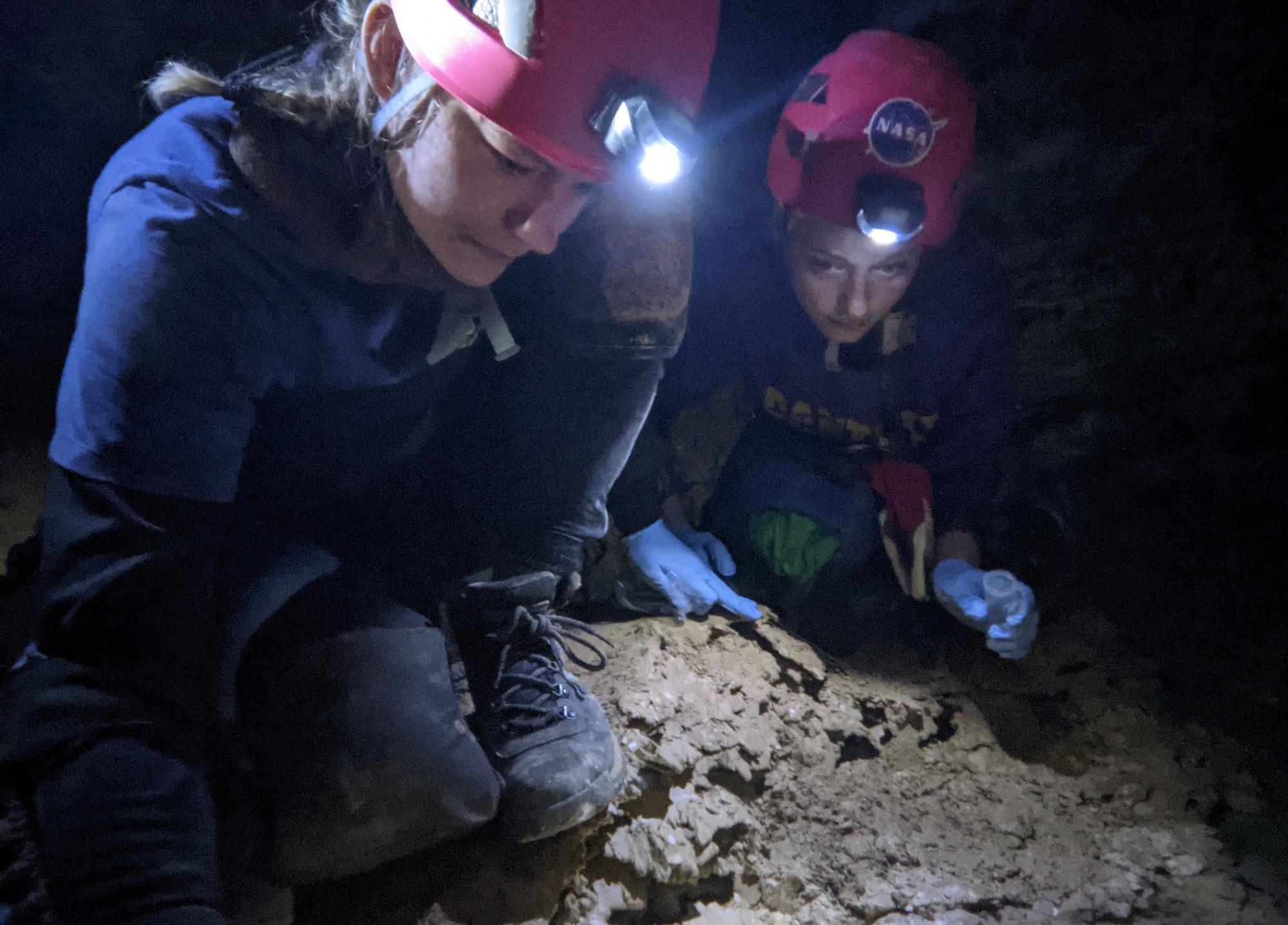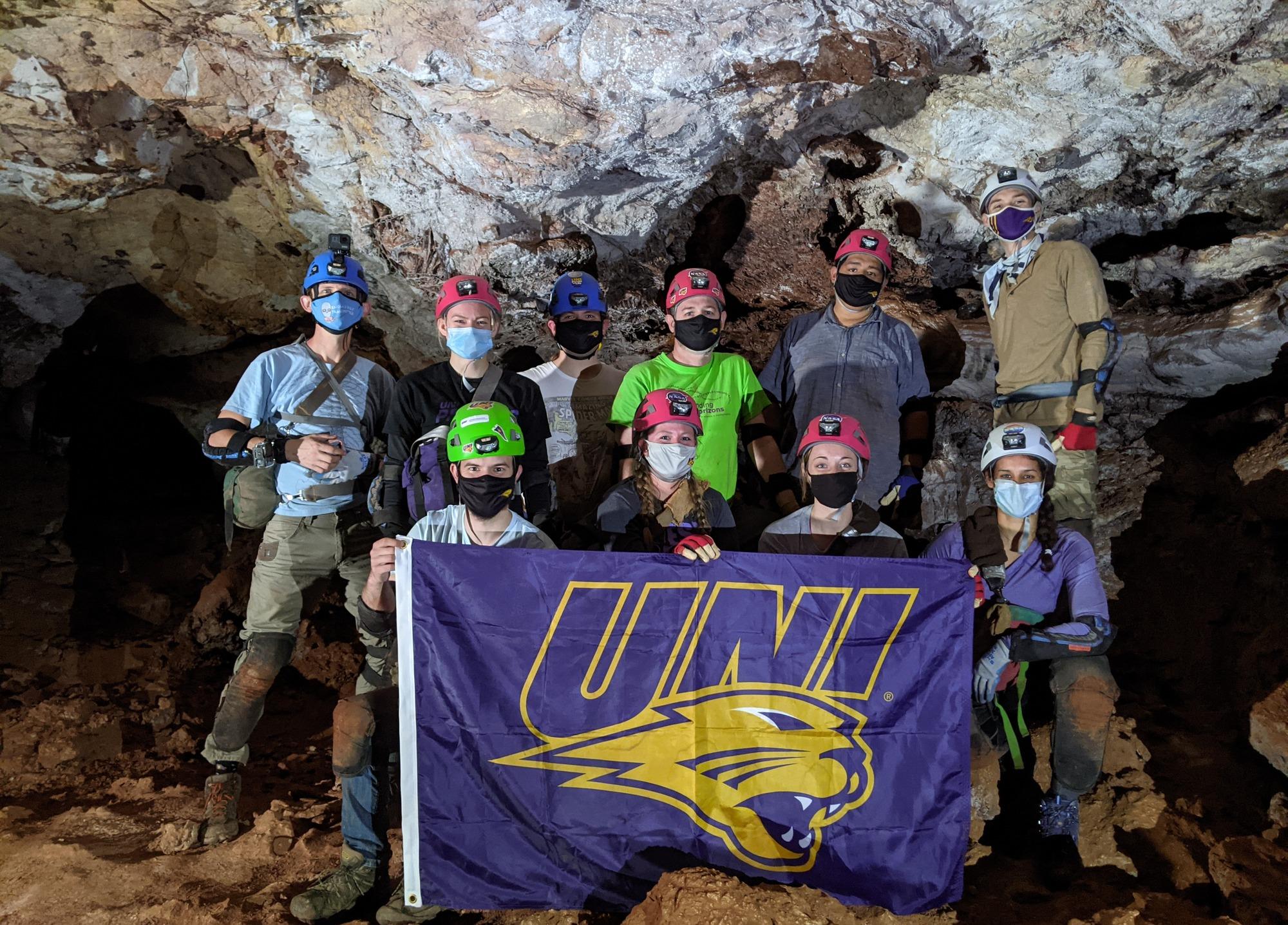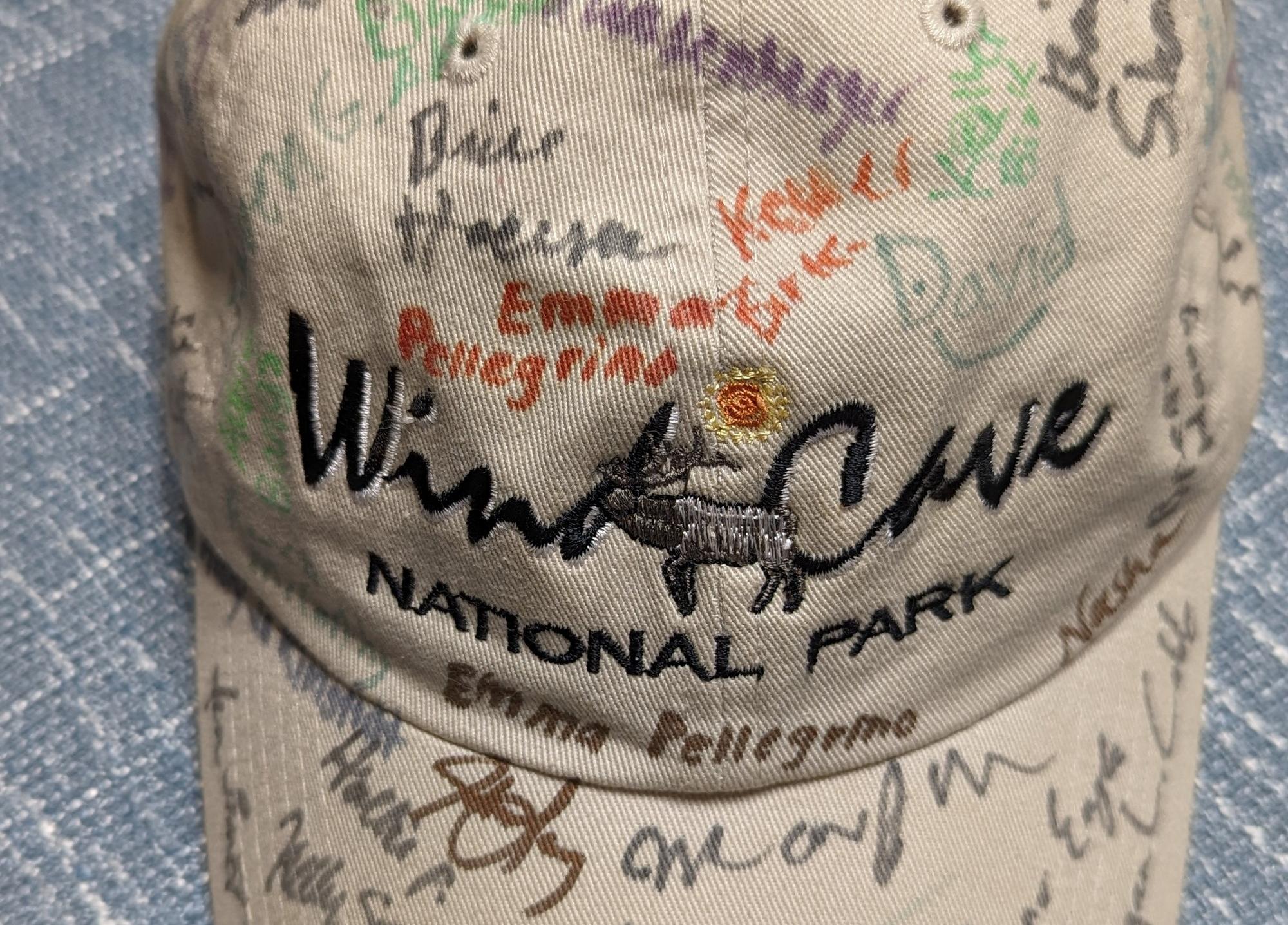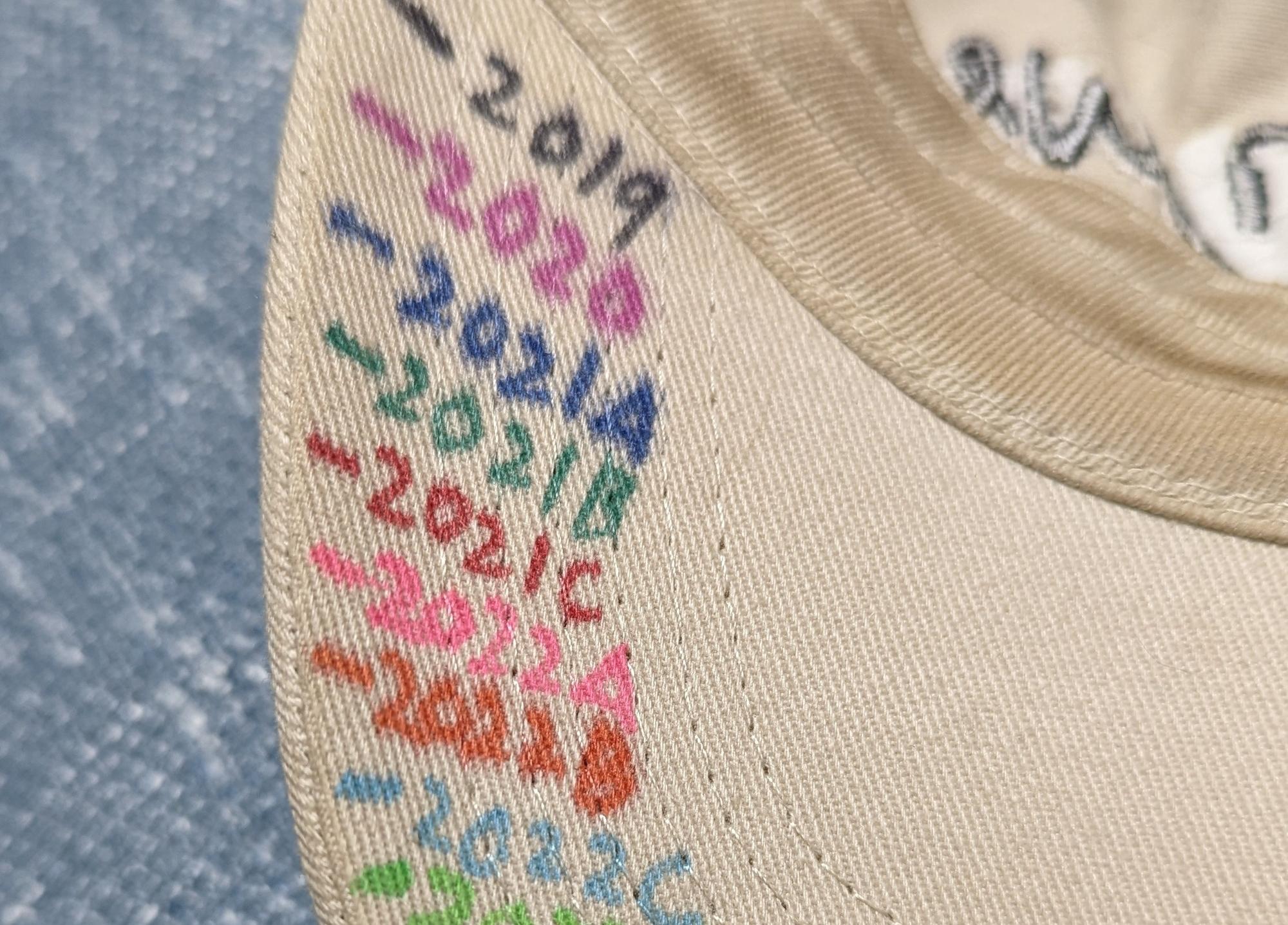Award to purchase new spectrometer will propel Wind Cave research forward
Award to purchase new spectrometer will propel Wind Cave research forward
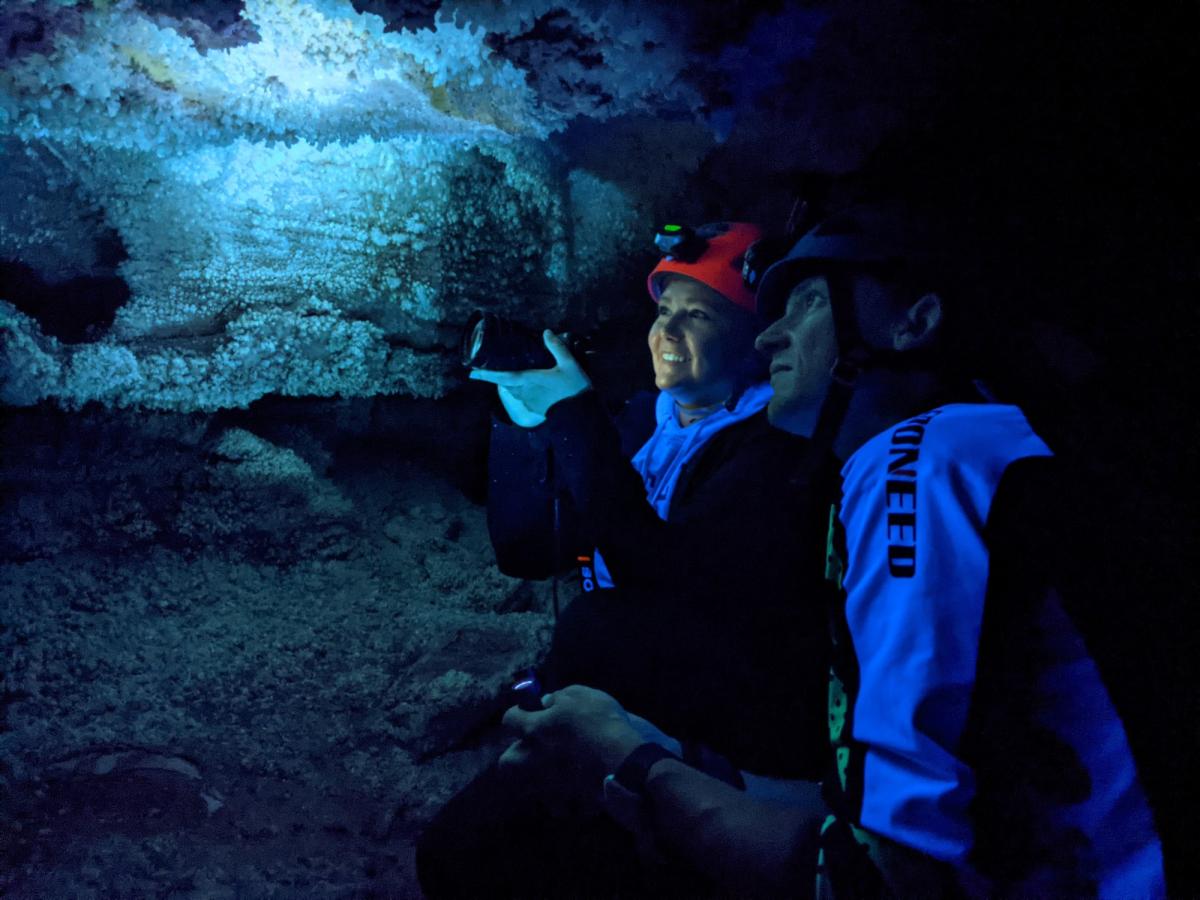
When University of Northern Iowa students go to Wind Cave National Park in South Dakota to learn about exploring our universe, they go armed with special equipment — but most important are the spectrometers, which help determine what trace minerals and organics may be present in the cave.
Now, the team will be able to purchase a new spectrometer to add to their ensemble, thanks to winning the SpectraWizard’s Spectroscopy Application Challenge, put on by StellarNet Inc., a company that makes spectrometers. The team has won $5,000 to put towards a spectrometer of their choice from StellarNet.
“When you're trying to put together these types of research projects and ideas, every bit of money counts,” said Joshua Sebree, an associate professor in the Department of Chemistry & Biochemistry who leads the team of Wind Cave students and submitted the winning application. “A $5,000 coupon to this company means we can set up a whole new system for a whole new type of research down in the cave and not have to spend all of the money out of our account. It's a chance for us to push our science significantly forward.”
For the competition, Sebree’s application focused on how his team uses spectroscopy while they are at the caves.
One of his students, Jenna Heinen, a junior majoring in biochemistry and physics with an emphasis in data science, submitted a separate application focused on the work she does in the lab recreating cave features. Since Heinen and Sebree are working on the same project, StellarNet decided to tie in Heinen and make it a joint win.
Spectrometers are crucial to the team’s work because they help determine what trace minerals and organics may be present in cave features like crystals, while allowing the team to leave cave features that may have been in the cave for tens of thousands of years intact.
“We can take all of these unique measurements of the crystals without damaging them or breaking them, so we can leave them behind for somebody else to enjoy,” said Sebree.
The crystals aren’t the only mesmerizing features to enjoy in the caves. The lake at the bottom of the cave is some of the purest water in the world, making it extra stunning. In fact, Sebree said the only other place where you can find water as organically pure and life-depleted as in Wind Cave is sealed underneath a glacier in Antarctica.
Sebree brought his first group of students to Wind Cave in spring 2019 as part of a course designed to provide a hands-on approach to astrobiology and give undergraduate students a chance to use advanced instruments, including spectrometers.
“We're trying to see how Wind Cave works as a model system to understand the moons of the solar system,” Sebree explained. “This cave system can be used to better prep missions that will be exploring the icy moons of the solar system.”
After his second trip to the caves, Sebree describes himself as “addicted” to the experience.
To date, 54 of Sebree’s students have completed the journey to Wind Cave, and some have gone multiple times. He keeps track of all the trips by having his students sign a baseball cap once they’ve made it through the expedition.
“Creating these types of unique experiences for the students lets them get a taste of something they may fall in love with — something they didn't even know existed,” said Sebree. “They might find a new passion and hobby, or this might become their new career path.”
Heinen has signed Sebree’s cap five times since she’s gone on five trips to Wind Cave. She’s grateful for the research experience the trips have provided her with even as an undergraduate.
“Undergrad research isn't really a big thing at every university,” she said. “UNI is a place where you can jump in right away freshman or sophomore year, get into research and see what this could look like as a career.”
Heinen said she applied for the research program in part because of her curiosity about life in space. She also thought the idea of exploring caves sounded fun.
“Someone having enough faith in me to run the experiments on my own and run the instrumentation on my own and do this data analysis isn't something I necessarily expected, but it's something I'm super excited about,” said Heinen. “I love it!”
While Heinen came to college thinking primarily about going into pharmaceuticals or drug development, she describes the cave exploration as having opened her eyes to the possibilities that await her in the future. Through the experience, she’s also grown especially fond of Wind Cave National Park.
“I like to call it my home away from home away from home,” said Heinen. “Obviously, since it’s part of the first research project I’ve ever been on, it’s always going to hold a special place in my heart. I would recommend going there to anyone.”
Heinen is looking forward to more trips to the cave, including one in December and another next summer.
Sebree said there are still plenty of targets the group has yet to hit, including a lake that will be a three-day round trip to get to and will require camping underground. Only a handful of people have ever made it to some of these spots, but he hopes it's something the group can do together – another once-in-a-lifetime opportunity that can only be had through UNI.


